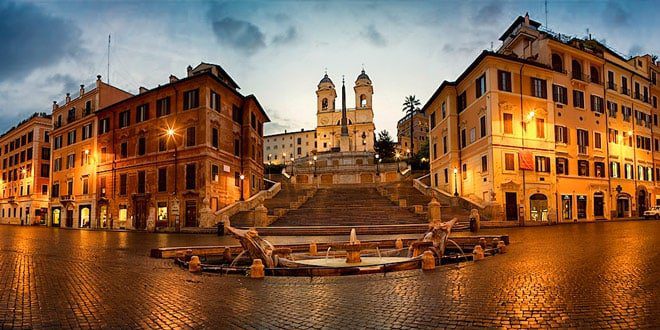One of the relatively recent and unusual attractions of Rome is the Spanish Steps. It is considered the most pompous and wide architectural descent in Europe. The square where this stepped ascent is located has always attracted artists, writers, travelers, and influential aristocrats. The ensemble, built in the 18th century, symbolizes the historically complex political relations between France and Spain.
The capital of Italy, Rome, dazzles and impresses with its beauty. The streets of Rome are filled with whimsical architecture that reflects the city’s glorious history. Over the millennia, Rome has experienced rises and falls. Despite the fall of the Roman Empire, the city has continued to maintain its unique beauty and character. The modern appearance of ancient Rome is framed by the wise grandeur of the past.
Why the Stairs are Called Spanish
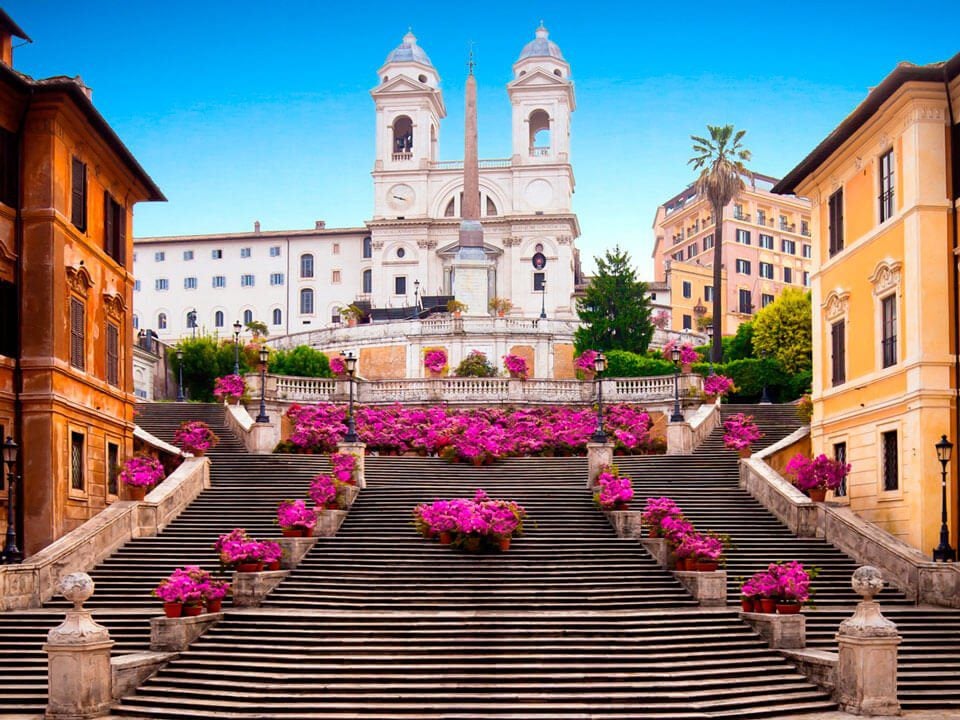
After the fall of the Roman Empire, the modern territory of the ancient state was divided into fragmented kingdoms constantly attacked by powerful neighboring powers. Rome became a bastion of the Christian world, forming the sovereign Papal States, governed by the episcopate led by the Pope. For centuries, powerful French and Spanish communities exerted their pressure on the political course of the Papal region.
In 1502, at the initiative of King Louis XIII of France, the Trinità dei Monti church was erected at the top of the Roman hill Pincio. The church was meant to demonstrate the Romans’ favor towards the French king. However, in the early 17th century, the Spanish Kingdom’s embassy was established at the foot of the slope, directly opposite the church. The luxurious residence clearly dominated over the French temple.
This resulted in a situation where symbols of the rival countries were located near each other. The square, where the two attractions were situated, became known as the Spanish Square. To avoid political conflict between the Papal State and the two powerful nations, it was decided to connect the church and the embassy with a single grand staircase. Subsequently, the staircase was popularly named after the square. Fate would have it that its construction would happen much later.
History of Construction
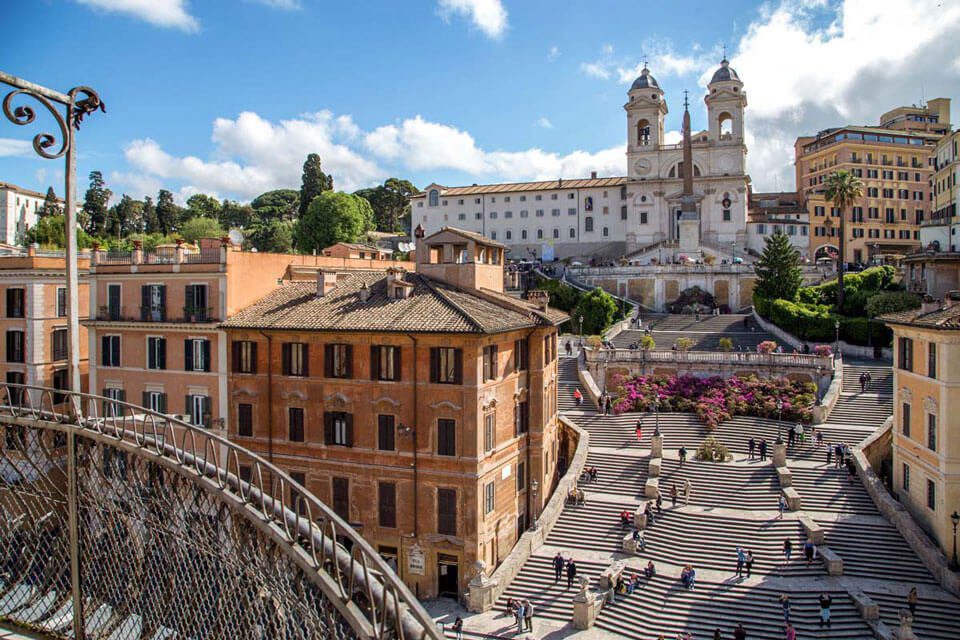
The staircase on the Roman square has a rather complex construction history. In the mid-17th century, a series of fierce wars between Spain and France began. This chain of conflicts between the countries affected the beautification of the square’s surroundings. The war, which lasted over 20 years, delayed the construction of the stairs.
When the strife between the two monarchies subsided, the French ambassador to Rome, Étienne Gueffier, allocated significant funds for the construction of the monumental staircase. The main concept of the construction was to improve diplomatic relations and establish an unbreakable alliance between France and Spain. The ambition of one side hindered this plan.
Cardinal Mazarin, the first minister of the French Kingdom, wished for the staircase to be crowned with a sculptural composition featuring Louis XIV on horseback. The Pope and the Spanish side opposed this idea, causing the construction to be halted again. In 1723, the construction of the stairs resumed. By this time, the political landscape in France had changed. Young Roman architect Francesco De Sanctis, who won a competition among city architects, dared to undertake the project. The steep slope’s soil, where the stairs were to rise, was regularly eroded by rainwater.
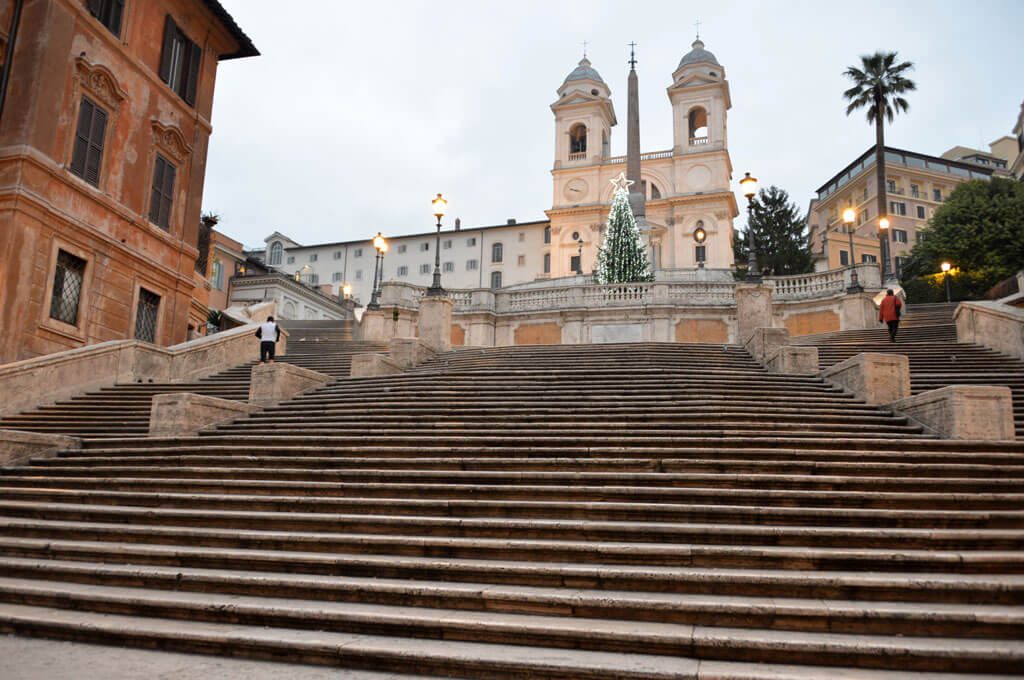
There was a danger that the ground would not withstand the heavy structures of the stepped ramp. It took two years to strengthen the soil. According to the project, the staircase acquired a wide three-tier passage framed by two narrow side flights. It leads to an observation deck placed centrally at the hill’s summit, adorned with a balustrade. The elegant staircase includes 138 steps with a concave, uneven but symmetrical shape. Travertine stone, combining limestone and marble properties, was used for the steps.
Large deposits of this material were located in the suburbs of Rome. In some places, the steps are narrow, while in others, they are wider. The difference in step sizes was due to the architect’s desire to give the structure an unusual, attractive appearance. The side parts of the structure were decorated with stone parapets adorned with the Pope’s symbols and the French kings’ heraldic sign. The construction was finally completed in 1725.
Barcaccia Fountain
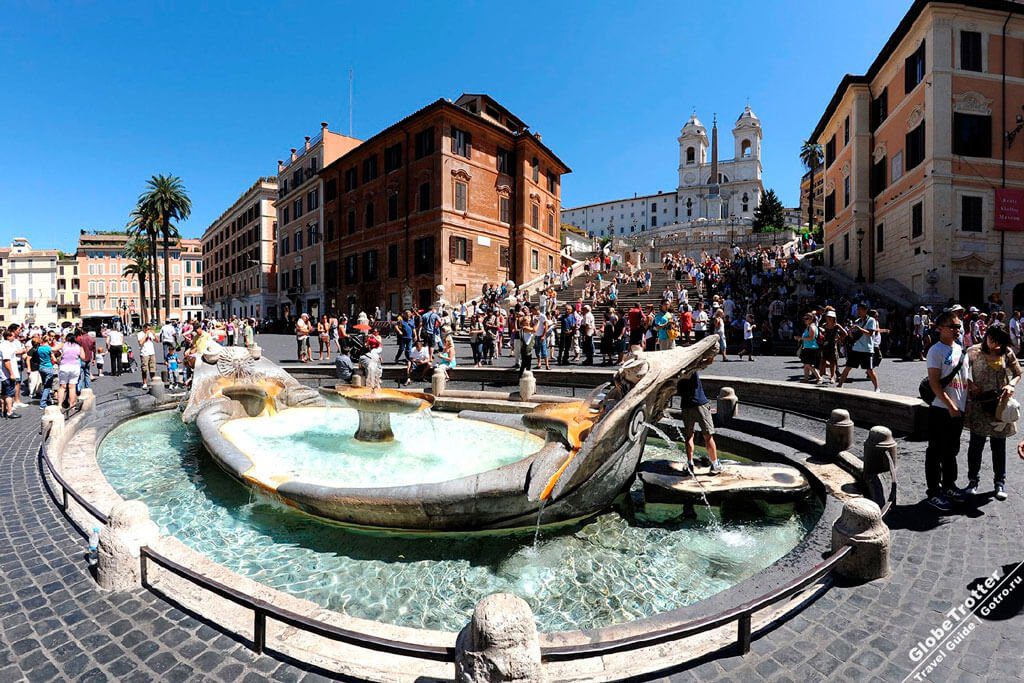
At the foot of the Spanish Steps is the small Barcaccia Fountain. The basin was installed in 1629 and depicts a half-sunken boat with water flowing from its cracks. The boat is in the center of the basin. Pietro Bernini designed this project. In medieval times, Rome experienced several floods. The Tiber River, overflowing its unfortified banks, flooded the city’s historical center. This natural disaster inspired the fountain’s design.
According to legend, after a natural disaster, a wooden boat carrying wine barrels was washed up on the Spanish Square. The sight of the half-sunken boat inspired the sculptor to create a water complex from white marble. The architect decorated his creation with the heraldic symbol of Pope Urban III of that time—a relief depicting the sun and bees. The sculptural work fits perfectly into the square’s overall architectural ensemble. The fountain is supplied with water from a clean drinking source, and many residents and visitors of Rome do not hesitate to fill their glasses, flasks, and quench their thirst.
Spanish Steps in Modern Times
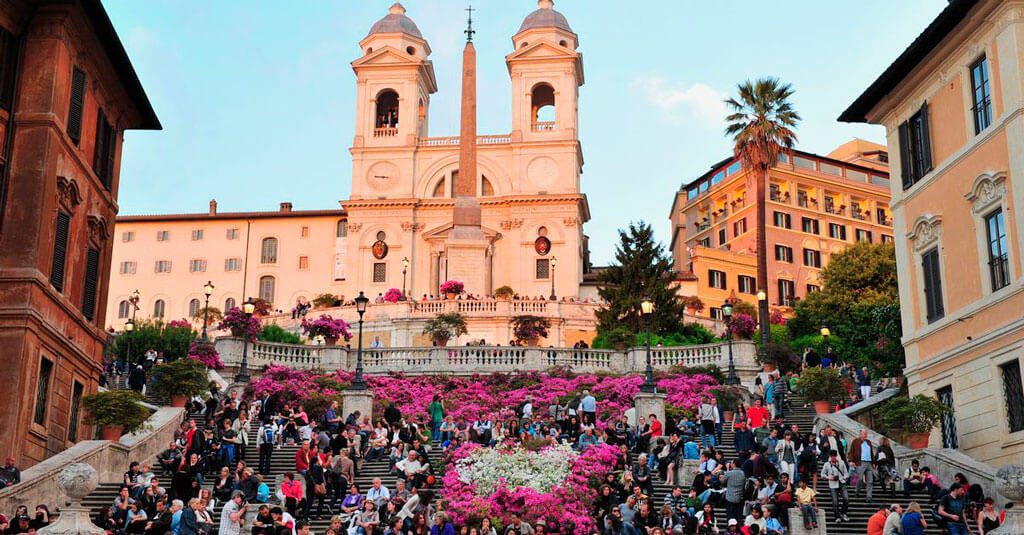
In the 20th century, the stairs gained international fame after the release of the Oscar-winning film “Roman Holiday” starring Audrey Hepburn. In the movie, the actress enjoys ice cream while sitting on the steps. Today, many tourists want to replicate the movie star’s actions. In 1992, a fashion show featuring famous international brands was held on the Spanish Steps, with the elegant steps serving as an impromptu runway for models.
The travertine steps gave the monumental structure strength and durability, so the stairs did not undergo significant restoration for over 250 years. However, by the late 20th century, it began to lose its original appearance. The elegant beauty of the monumental structure was eroded by time and weather. Numerous tourist crowds also left their mark, causing the steps to darken, loosen, and crack. The deteriorated appearance of the ancient Roman attraction forced the municipality to temporarily close the structure to visitors.
In 2015, largely thanks to private sponsors, repair and restoration work began on the dilapidated stairs. The restoration cost 1.5 million euros. A year later, the renovated attraction was officially reopened. Rome’s mayor, Virginia Raggi, promised to pay special attention to the ancient stairs constantly. The city’s head instructed the police to strictly monitor people’s behavior and prevent any inappropriate actions.
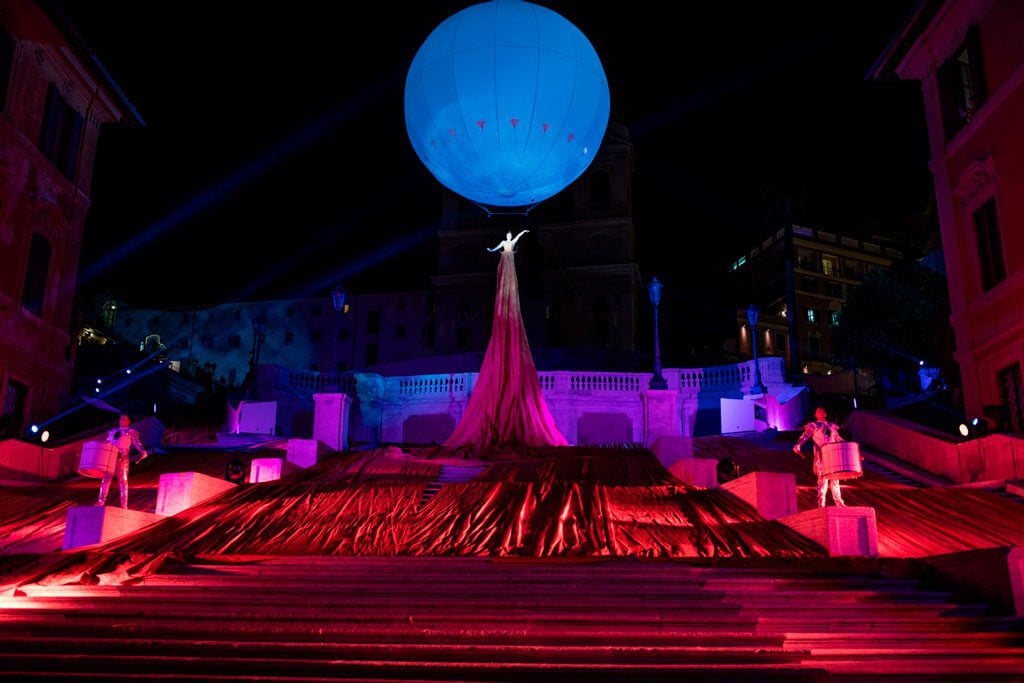
Today, the stairs are a favorite resting place for both residents and visitors of Rome. In good weather, street performers and circus artists often perform here. In the summer and spring, the northern part of the structure is adorned with beautifully blooming azaleas. Numerous festive Christmas events are held in winter, with everything lit up with bright lights and filled with the joy of revelers.
Location and How to Get There
The Spanish Steps attract crowds of tourists like a magnet. They are located on the Spanish Square in the northern part of Rome. You can reach it by metro, getting off at Spagna station, or simply walking there. Many bus routes also pass through this part of the city.

